What is jacaranda and how to grow it?
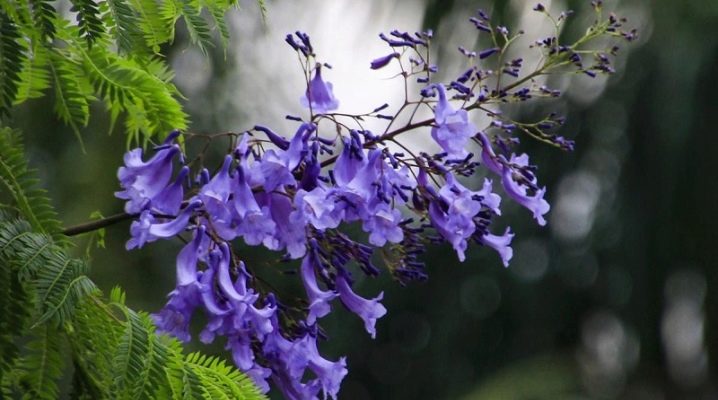
For those looking for new options for exotic crops, it makes sense to get acquainted with what jacaranda is, what is the description of the tree, and how to grow it, jacaranda. Noteworthy are mimosoliferous jacaranda and other species. It is useful to find out where it grows in nature, how cultivation from seeds at home is organized, and what kind of care is required for this.
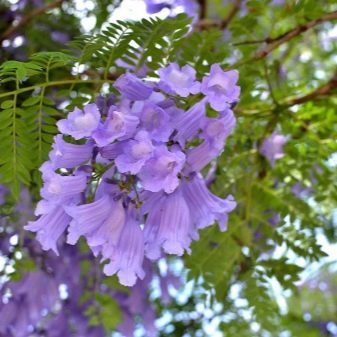
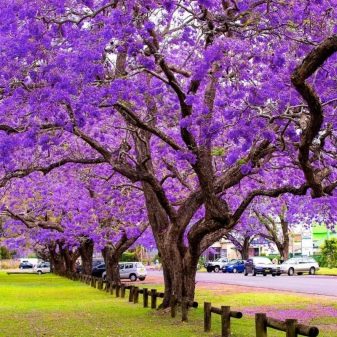
general description
Like many other plant types used in gardens, this jacaranda is a whole genus, not a separate species. This genus belongs to the bignonium family. In total, the genus includes over 50 varieties. Mostly these are medium or even large evergreen trees that grow most often in the tropics and subtropical regions. Mostly they come from South America, and among it they are most often represented in Brazil. It is established that the name of this plant appeared in the language of the Guarani Indians. In the literal sense, it means "fragrant", and in Europe, references to this kind appeared in the middle of the XVIII century.
The decorative properties of jacaranda are highly appreciated in African countries, Australia and the Eurasian continent. Usually jacaranda looks like a shrub or tree up to 30 m high. Its trunks are covered with a thin, smooth bark painted in gray-brown tones. There is a small thickness of the branches, which are slightly twisted. A pinnate variety of leaves is characteristic. Basically, the foliage is double-feathery, in some cases it belongs to the feathery or simple group.
The violet tree - an alternative name for jacaranda - is distinguished by the grouping of flowers in the apical brushes.

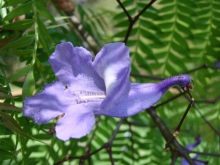
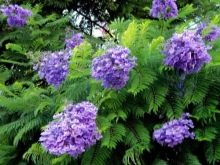
Mostly the flowers are lilac and faint blue. But there are separate types in the genus with white and purple flowering. A corolla with 5 petals is characteristic. It is noted that this culture smells very strong. The flower contains staminode. Jacaranda has 18 chromosomes. Its fruit is a rounded or oblong box, inside which there is a mass of miniature seeds. It should be borne in mind that the seeds of the first harvest sprout extremely slowly, and this is not a problem, but a biological norm.
In nature, jacaranda grows where the air never cools below +7. In total, flowering lasts about 60 days, and during this period the tropical guest manages to form large leaves. In Russia, jacaranda is known mainly by experienced flower growers. In the wild nature of our country, it does not occur. The experience of practical cultivation in culture is still extremely small. The longest life form is bonsai. But information about this cultivation option is still contradictory.
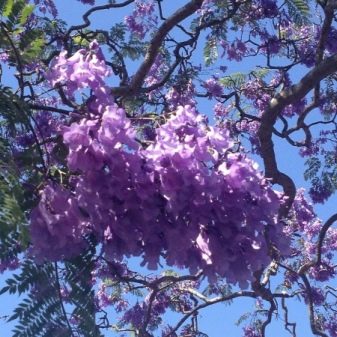
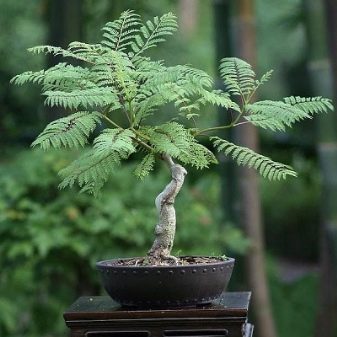
The high decorative properties of the culture are undeniable. It is mainly used to decorate large areas. You can plant this plant in parks and just on the streets. Jacaranda wood is very valuable and is often released for production:
- expensive pieces of furniture;
- musical instruments;
- ornaments of an original look;
- other design items.
The durable wood lends itself very well to polishing. With this processing, it acquires a pronounced brown color. Purple notes are mixed with it. The very same furniture products and musical instruments are very well obtained precisely because of this property. During the dormant period in winter, the temperature should be maintained at 15-19 degrees.

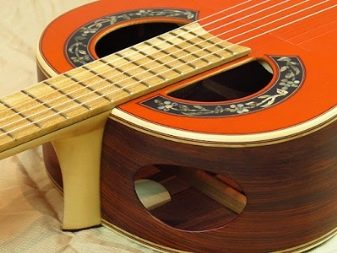
Popular types
The mimosolous jacaranda is in the greatest demand. Its height in domestic culture reaches 3 m. The straight trunk develops very powerfully and does not branch. It is covered with a strong dark brown bark. The feathery type of leaves is characteristic, referring to the elongated-lanceolate type.
The foliage is colored deep green and is arranged in an opposite pattern. There will be a rather considerable distance between the leaves, which gives the crown a fair amount of originality. Typically paniculate inflorescence structure. In each of the inflorescences there are several tubular flowers up to 5 cm long. They are painted in a lilac tone, but their surface is covered with white spots.

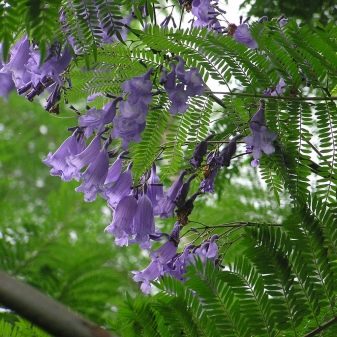
Among the mimosa jacaranda, the Delta variety stands out. It gives bushes up to 2 m in height with a thickened trunk. This trunk is covered with a smooth reddish-brown bark. The spreading branches of "Delta" have the same color.
Another variety is becoming more and more popular - "Magdalena", which grows rapidly and rises up to 3 m, covered with bright green leaves. This culture is great for indoor conditions.
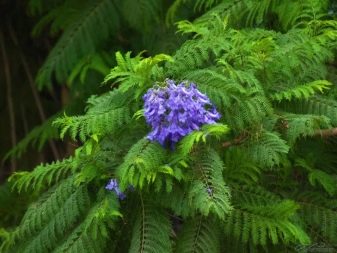

An alternative is fluffy jacaranda. This is a sprawling species that can grow up to 2-2.5 m indoors. It is characterized by a feathery appearance of leaf plates, which are clearly divided into ovoid segments.
Typical and paniculate inflorescence formed by purple tubular flowers. It is worth considering that this species is decorative only at a young age - mature specimens are not attractive enough for home culture.
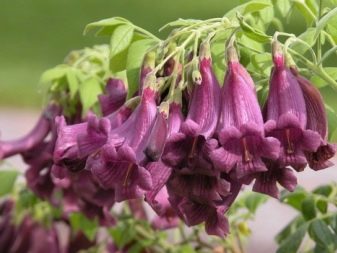
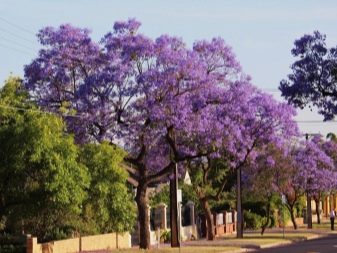
Landing
Jacaranda is suitable for large spaces in warm places. It tolerates pathological processes and can be planted from autumn to spring, against the background of mild rainy weather. But the period of summer heat is not suitable for planting. In such conditions, seedlings may suffer or even die prematurely. For a tropical plant, you need to choose a place that is illuminated by the sun for at least 8 hours every day.
Good drainage of the area is very important. The land can be both loamy and sandy in composition. Deep shadow is categorically contraindicated, as well as clay soil. Before planting, carefully remove all weeds and debris. The breaking up of the earth is done manually (with a shovel), in difficult cases it is more correct to use rotary cultivators. Regardless of the tool, all clods should be broken to a depth of 50 cm. The landing site is watered (moistened) in advance. It is preferable to select areas with a weak acid reaction. High soil moisture is unacceptable, which is why drainage is relevant. Otherwise, there are no special requirements for the cultivation of this plant.
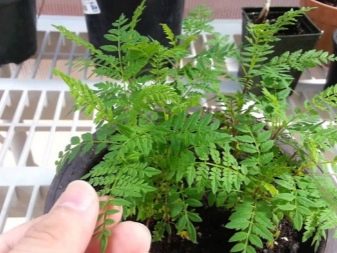
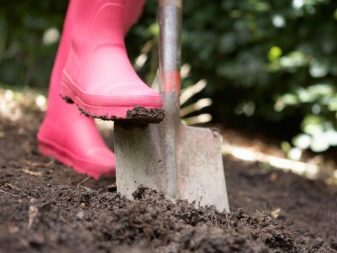
Care
The significant size of jacaranda does not allow them to be grown at home in a limited area. To keep them, you need to use large pots that can hold at least 50 kg of soil. The best substrate in this case will be perlite or vermiculite soil. When growing a jacaranda at home, it is required to provide it with frequent watering, which ensures stable soil moisture. For fertilization, diluted mixtures are used, they are applied monthly until the growing season ends. At the end of autumn, even before the early light frost sets in, the tree must be moved indoors. There, Jacaranda should be provided with bright illumination, warm humid air.
Spraying from a spray bottle or using a humidifier is encouraged. With the onset of a full winter, watering is necessary only after the soil has dried. Jacaranda places high demands on soil saturation with nutrients. Superphosphate and other phosphorus-based additives are considered the best solution. Whether to use them dry or as a solution is a matter of personal taste. In addition to phosphorus fertilizers, potash fertilizers are also important. From organic fertilizing, humus, bird manure and peat show themselves well.
Such supplements, applied every 14 days, can help strengthen the plant and enhance its growth; there is no need for this in the resting season.
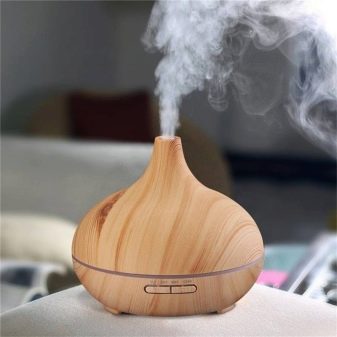
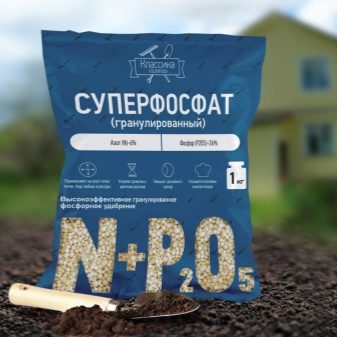
Adult jacaranda does not require active watering. The exception is the hot summer period. In winter, it is important to exclude the drying out of the earth clod. In the spring months, young shoots are supposed to be pinched. Pruning is required before transplanting into a larger pot. Bright rooms are very pleasant for such a tropical culture. However, excessive illumination affects it negatively. It is better to limit the active backlight to a few hours a day, and shade the jacaranda the rest of the time.
It must be remembered that a tree can reach for the light. Rotating the pot during the day minimizes the likelihood of related breakage, trunk curvature. During the period of foliage change, feeding is undesirable. A compact top is formed by pinching the plant every spring. It must be remembered about the intensive growth, often leading to the exposure of the trunk. One can only come to terms with such a problem. But this is also a lesson for further - do not forget to form the crown.
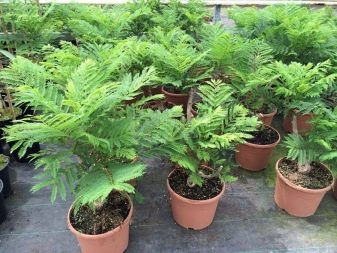
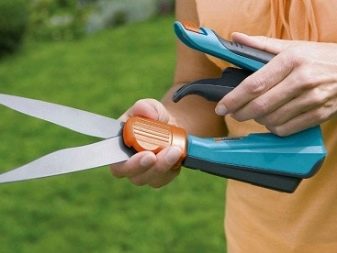
Reproduction
From seed
This approach is justified in the spring. 24 hours before the procedure, the planting material is wrapped in a damp cloth. The planting itself consists in covering the soil by 1 cm and thoroughly watering. While maintaining a stable temperature of 22-24 degrees, the first shoots can be expected to appear on days 14-20. The hatched seedlings must be kept in well-lit places, diving over pots with a section of about 7 cm as they grow. When picking, use:
- 1 part of peat land;
- 1 share of sand;
- 1 share of humus;
- 2 parts of turf land.
For the next transplants, 9-centimeter and 11-centimeter pots are used. Gauze or other tissue for planting seeds is rolled up in several layers. The fabric needs to be systematically moistened again. The very first cups can be covered with foil or glass. They remove the shelter as they grow.
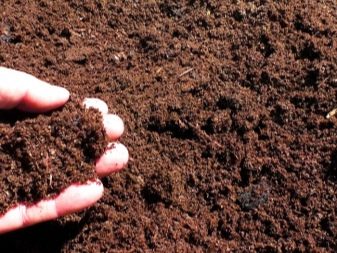
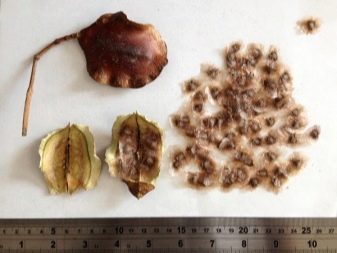
Vegetative
Cuttings can be prepared in May, June and July. Their optimal length is 10 cm. From below, the planting material is treated with a root growth stimulator. Then it is planted in a moist substrate and kept under a film in warm places. It is possible to expect rooting in about 14 days, and the formation of young foliage is a sure sign of it.
After rooting, vegetative seedlings are placed in separate pots. You can also use dilution in a glass of water. Root activators will again be required. The water in the container, mixed with coal powder, is systematically changed.
Transplanting in individual pots is done as soon as the roots grow to 1-1.5 cm.
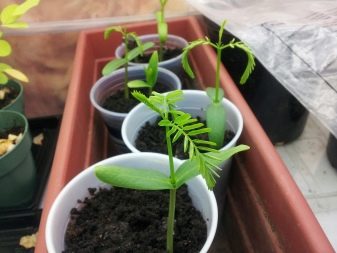

Diseases and pests
Jacaranda can be affected by various pathologies and pests. More precisely, it is normally very stable. But with poor soil drainage, fungal rot is likely. Small aphids and whiteflies often develop on Jacaranda. The fight against such insects is carried out using a combination:
- insecticidal soap;
- special neem oil;
- plain water.
In winter, foliage can fly around. This is a completely natural process for a plant, and there is nothing pathological in it. The same thing happens sometimes in the spring. Sometimes it is necessary to protect the plant from spider mites and scale insects.
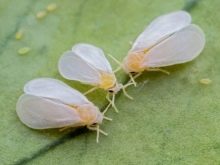
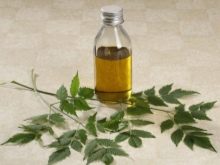














The comment was sent successfully.